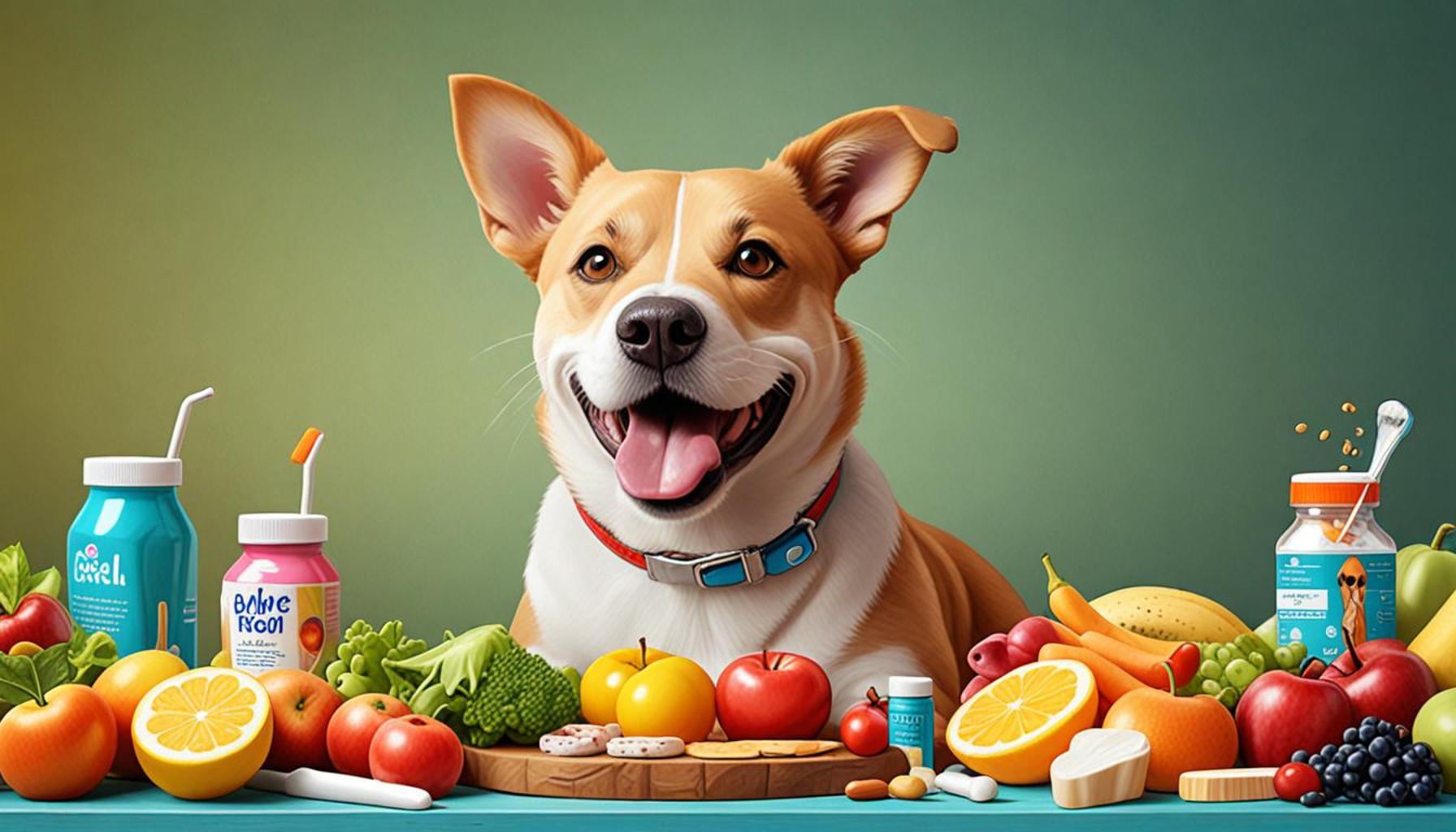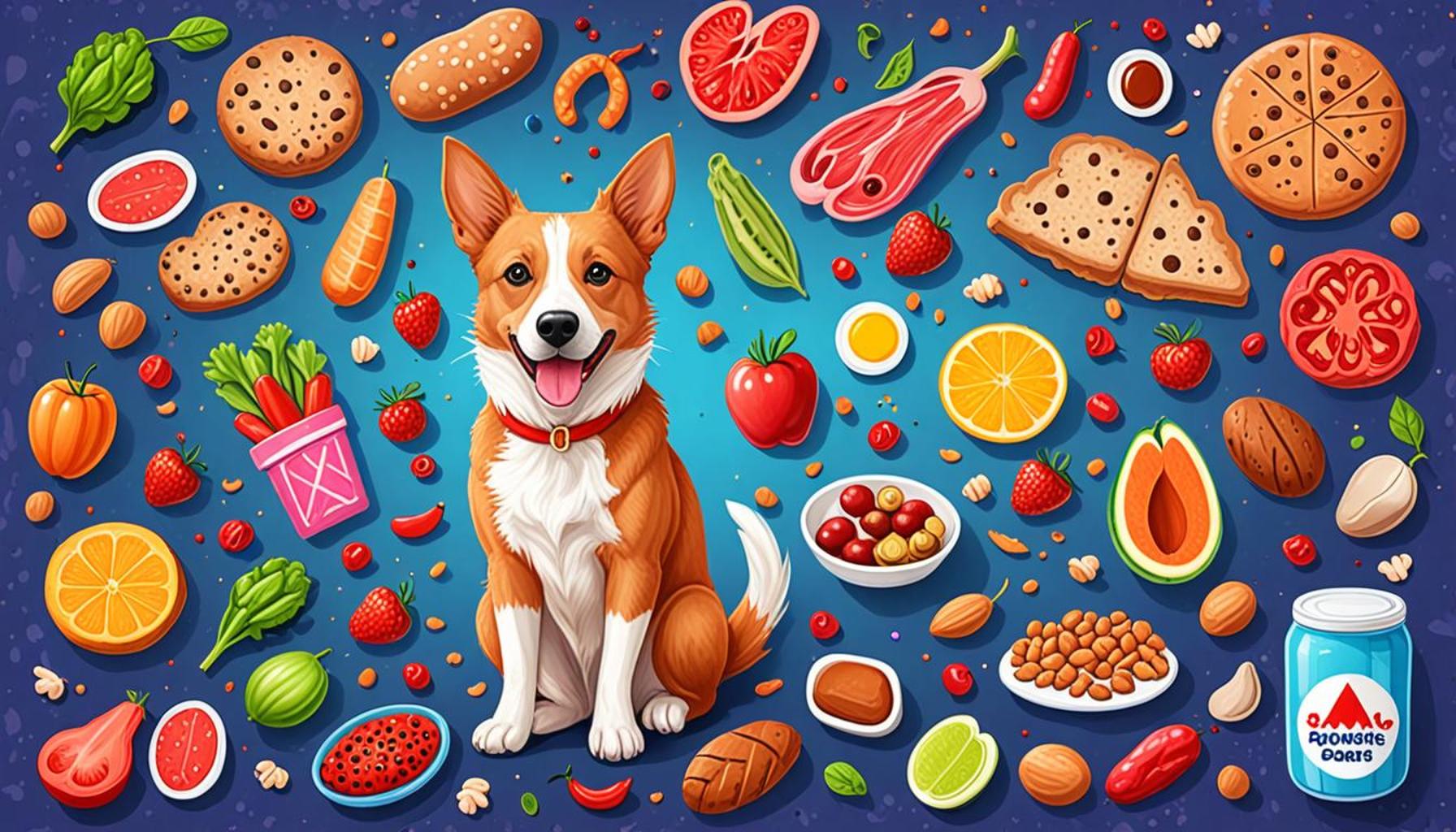The Influence of Lifestyle on Pets’ Diet: Physical Activity and Nutrition

The Interplay of Lifestyle Factors in Pet Nutrition
In the fast-paced lives of pet owners across the United States, pet diets often get overlooked. Yet, understanding the relationship between lifestyle, physical activity, and nutrition is fundamental for maintaining a pet’s overall health and well-being. Just as humans flourish on balanced diets and systematic exercise, our pets, too, require diligent attention to their daily routines and nutritional needs.
Several key factors exert significant influence on your pet’s dietary requirements:
- Activity Level: Dogs and cats that lead an active lifestyle typically require more calories than their less active counterparts. For example, a Labrador that’s a constant fetch enthusiast will need more nutrient-dense food to sustain its energy than a Shih Tzu who enjoys lounging on the couch. It’s essential to tailor their caloric intake based on their daily activities to prevent weight gain or muscle loss.
- Age and Breed: Young pets, like puppies and kittens, require different nutrients to support their rapid growth compared to senior pets that may need specialized diets to aid in joint health or digestion. Certain breeds may also have predisposed health issues requiring specific dietary considerations. For instance, large breeds may benefit from joint supplements to mitigate hip dysplasia problems, while smaller breeds might need more energy-dense food to meet their higher metabolism.
- Health Conditions: Pets suffering from conditions such as diabetes, kidney disease, or allergies often need specialized diets. For example, diabetic dogs often require food that is high in fiber and low in carbohydrates to help manage blood sugar levels effectively. Collaboration with a veterinarian can guide you in choosing the right diet for your pet’s health conditions.
Beyond these factors, the environment also plays a pivotal role:
- Pets living in urban settings may encounter restricted space for exercise, which can dictate their dietary needs. Short walks might be enough for some city pets, but they may require more enriching diet options to compensate for less physical activity.
- Seasonal changes can affect both outdoor activities and food needs. Colder months may put pets in a more sedentary state, necessitating a reduction in caloric intake, while warmer months could see an increase in energy expenditure due to outdoor play.
Recognizing and understanding these various factors allows pet owners to customize their pets’ diets effectively, ensuring their furry companions remain happy, healthy, and full of vitality. It’s a dynamic interplay of physical activity and nutrition that shapes optimal pet diets. As responsible pet owners, delving into these aspects not only enhances your pet’s life but also fosters a deeper bond through mutual well-being. Join us as we continue to explore the many ways nutrition impacts your pet’s health and lifestyle.
DON’T MISS OUT: Click here to learn about the benefits of a natural diet for dogs</

Understanding Activity Levels and Their Dietary Implications
When considering the influence of lifestyle on pets’ diet, one of the first aspects that comes to mind is the correlation between a pet’s activity level and its nutritional needs. This correlation is not merely academic; it is critical for ensuring that our companions lead fulfilling and healthy lives. Engaging in regular physical activity helps maintain a pet’s body weight, supports muscle development, and contributes to overall well-being. However, the amount and type of physical activity a pet engages in directly affects its caloric and nutritional requirements.
For instance, consider the stark difference between a high-energy dog, such as a Border Collie, and a more sedate breed, like a Basset Hound. A Border Collie, known for its intelligence and exuberance, thrives on agility training and long walks, requiring a diet that provides ample energy to sustain its active lifestyle. In contrast, a Basset Hound may find joy in leisurely strolls and lounging. As such, it requires fewer calories, and its food should align accordingly to prevent obesity, which could lead to significant health issues.
The notion of caloric requirements extends beyond just activity levels. Age and breed provide additional context regarding how active a pet should be. Young pets are typically bundles of energy, demanding ample protein and calories for growth and development. Meanwhile, older pets, needing less frequent exercise, may benefit from diets designed with lower calories but enriched with joint-supporting nutrients to promote mobility.
Adjusting Diet with Seasonal Changes
Interestingly, seasonal shifts can also necessitate adjustments in a pet’s diet and exercise routine. During the summer, pets tend to spend more time outdoors, leading to increases in their energy expenditure. A playful dog chasing a frisbee under the sun will likely require more carbohydrates and calories to keep up with its active lifestyle. Conversely, when winter arrives, outdoor activities may dwindle, leading to reduced physical endeavors. Pet owners must be vigilant, adjusting feedings and portions to reflect these changes in activity to maintain optimal health.
Moreover, the dog’s environment significantly impacts its activity levels. For example, urban dwellers might find their dogs spending less time running in open grasslands compared to their suburban or rural counterparts. In the city, shorter walks, confined spaces, and limited play areas can affect a pet’s daily physical activity, potentially leading to weight-related issues. In such scenarios, it is essential to incorporate enriched diets, perhaps featuring higher-quality proteins and nutrients tailored to ensure robust health despite reduced activity.
Recognizing the Individual Needs
Ultimately, understanding your pet’s individual needs is key. No matter where you live or how active your pet is, the interplay of physical activity and nutrition must be continuously assessed. Factors such as lifestyle, geographical location, and even weather can sculpt the dietary requirements necessary for your pet’s happiness and health. The journey towards a balanced pet diet is not a one-size-fits-all approach, but rather a tailored strategy that demands awareness, adaptation, and ongoing learning about our beloved companions.
| Lifestyle Element | Impact on Pet’s Diet |
|---|---|
| Physical Activity Levels | Active pets require higher protein and nutrient intake for energy. |
| Owner’s Eating Habits | Pets may be influenced by their owner’s diet, leading to nutritional imbalances. |
| Home Environment | Stress or sedentary lifestyle can lead to obesity and health issues in pets. |
| Social Activities | Engaging in playful activities promotes better digestion and metabolism. |
Understanding the link between lifestyle choices and pets’ dietary needs is essential. For instance, physical activity significantly influences how much nutritional support a pet needs. Active animals require more substantial diets rich in essentials to fuel their energy demands. Conversely, a pet surrounded by a sedentary, less stimulating home often faces dietary challenges, possibly leading to obesity and related health complications.Moreover, an owner’s dietary preferences tend to shape their pet’s meals. If a pet parent primarily consumes unhealthy foods, it can unintentionally affect what they offer their pets, resulting in nutritional deficiencies.Additionally, a happy, active lifestyle for pets—including engaging social activities—not only fosters better physical health but also enhances overall dietary digestion and absorption. Emphasizing these factors can lead to healthier pets and contribute to their longevity and wellbeing. Consider exploring this vital topic further to optimize how the lifestyles of pet owners influence their furry friends’ diets.
DISCOVER MORE: Click here for effective strategies
Factors Affecting Dietary Choices Beyond Activity
While physical activity certainly plays a pivotal role in shaping a pet’s dietary needs, other lifestyle factors also influence nutritional choices. These elements can range from breed-specific dietary sensitivities to owner preferences and even prevailing trends in pet nutrition. Recognizing these aspects can empower pet owners to make well-informed decisions regarding their animal companions’ diets, ultimately enhancing their well-being and longevity.
Breed and Dietary Sensitivities
Different breeds come with unique nutritional needs and potential health issues that necessitate careful consideration in their diets. For example, large breeds are more susceptible to conditions like hip dysplasia. Therefore, a diet that incorporates joint-supporting ingredients, such as glucosamine and omega fatty acids, can be beneficial for them. Conversely, smaller breeds that may be prone to dental issues might benefit from kibble designed for better oral health.
Furthermore, particular breeds might have heightened sensitivities to certain ingredients. For instance, many dog owners have observed that breeds like the Labrador Retriever can develop allergies to grain-heavy diets. In response, many choose grain-free options or those hypoallergenic, which can directly affect their overall health and energy levels. Understanding these sensitivities can guide owners towards selecting suitable food options that align with their pets’ specific needs.
Owner Preferences and Trends in Pet Nutrition
The explosion of pet health consciousness among owners in recent years has led to ansurging demand for high-quality, organic, or specialty diets. This shift reflects a broader understanding of how nutritional choices impact pets’ health in much the same way they do for humans. Pet owners are increasingly exploring raw, grain-free, or limited-ingredient diets, some even turning to home-cooked meals, which can support distinct lifestyles influenced by mindfulness about sourcing and sustainability.
Moreover, the rise of subscription services for pet food allows owners to curate their pets’ meals based on individual lifestyles and preferences more efficiently. This service not only fosters convenience but also promotes tailored nutrition. In particular, niche companies are appealing to health-conscious owners by offering specially formulated diets that cater to picky eaters, weight management, and food allergies, showcasing the dynamic intersection of owner choices and pet nutrition.
Environmental Impact and Sustainability
As lifestyle choices permeate the realm of pet care, sustainability concerns have also taken center stage. Many pet owners are now prioritizing eco-friendly practices, choosing brands that emphasize sustainable sourcing of ingredients and environmentally responsible manufacturing processes. This shift ensures that pet food production aligns with a broader commitment to environmental health, thus reflecting lifestyle choices that extend beyond the household.
Additionally, this awareness encompasses the implications of a pet’s diet on local and global ecosystems. Ingredients that are informally sourced or those derived from non-sustainable practices can contribute to environmental degradation. By opting for brands that emphasize ethical supply chains or that use insect protein—a rising trend in both pet and human food—owners can align their pets’ diets with personal values regarding sustainability and health.
Health Insights from Regular Veterinary Consultations
Regular veterinary check-ups are an essential component of understanding a pet’s evolving dietary needs. As pets age or face health challenges, their nutritional requirements may change. These consultations offer valuable insight into possible adjustments in diet based on specific health conditions such as kidney disease or obesity. By maintaining open communication with veterinary professionals, pet owners can stay informed about the best practices for fueling their pets based on lifestyle factors.
Ultimately, the intersection of lifestyle, physical activity, and dietary choices is a multifaceted journey. As pet owners navigate this terrain, they are empowered by the wealth of knowledge available—enabling them to craft optimal diets tailored to their pets’ individual needs, all whilst embracing the broader health trends and environmental considerations that play a part in their decision-making processes.
DIVE DEEPER: Click here to discover more insights
Conclusion
In conclusion, the multifaceted relationship between lifestyle factors, physical activity, and pet nutrition highlights the importance of a holistic approach to maintaining pet health. As pet owners become more conscious of their choices, understanding that a pet’s dietary needs vary greatly among breeds, ages, and activity levels is crucial. Owners who consider breed-specific sensitivities, and align their nutritional choices with their pets’ unique circumstances, can contribute significantly to their overall well-being.
The emerging trends towards high-quality, organic, and sustainable diets not only mirror a growing health consciousness among pet owners but also reflect a responsibility towards environmental sustainability. By choosing environmentally friendly brands and exploring tailored meal plans, owners can cultivate diets that meet their pets’ needs while adhering to personal values. The accessibility of subscription services further enhances the ability to customize pet diets, ensuring that they align with both animal health and owner preferences.
Moreover, regular veterinary consultations play a pivotal role in adapting dietary strategies in response to evolving health needs. This vital communication ensures that pets receive optimal nutrition as their life stages and activity levels change.
Ultimately, by embracing an informed and conscious approach to pet nutrition that accounts for lifestyle dynamics, owners can truly enhance not just their pets’ vitality, but also deepen the bond they share. It’s an ongoing journey of discovery, one that leads to a healthier, happier life for all members of the family, furry ones included.


